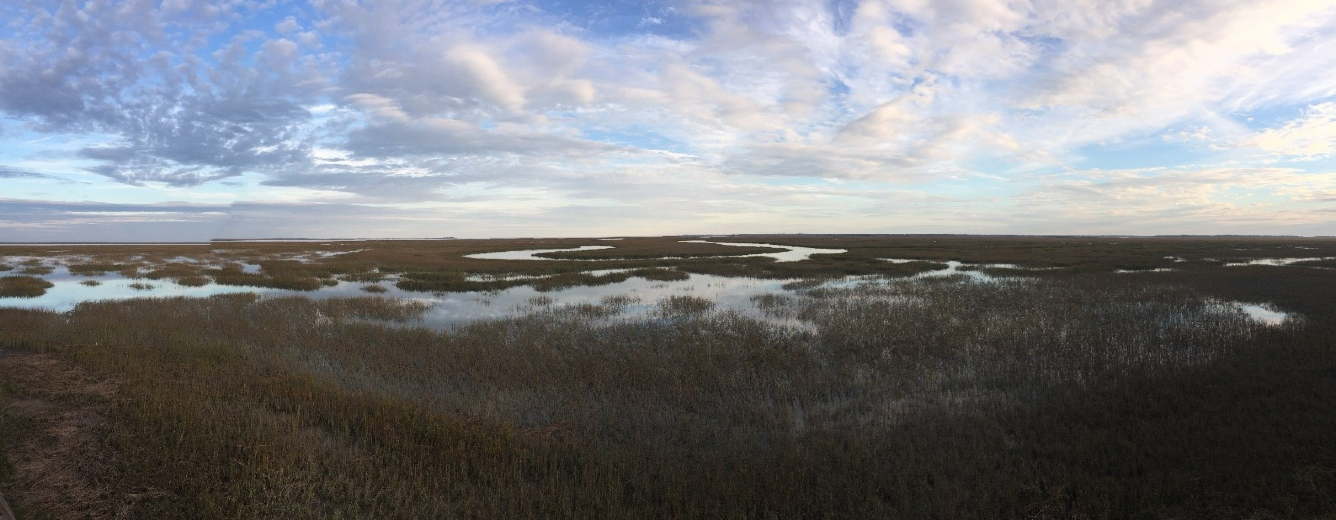Such a short little phrase, just five words, that seems pretty straight forward. But don’t be fooled! Since the late 1980s, these five words are arguably one of the most disputed and litigated topics in the environmental field due to the current patchwork of confusing definitions and sometimes conflicting regulatory interpretations that are in place at the state level.
For example, you may know someone who has spent YEARS complaining about their never-ending battles with neighbors, governments–local and state–over the “wetlands” on their property. No two people ever interpreted the language the same way, lawyers popped up like whack-a-mole at every turn, and it dragged on for years!
In an effort to lend some clarity, the U.S. Environmental Protection Agency (EPA) and the Department of the Army (Army) closed out 2018 by proposing a revised definition for “waters of the United States.” What they proposed would establish the scope of federal regulatory authority under the Clean Water Act in a more clear and understandable way.
The New Proposed Definition.
- This proposed rule would provide clarity, predictability, and consistency so that regulators and the public can understand where the Clean Water Act applies—and just as importantly, where it does not. Such straightforward regulations would continue to protect the nation’s navigable waters, help sustain economic growth, and reduce barriers to business development.
- The role of federal government under the Clean Water Act is ultimately derived from Congress’ power to regulate commerce involving navigable waters. As a result, this proposal clearly limits “waters of the United States” under the Clean Water Act to those that are physically and meaningfully connected to traditional navigable waters.
And Why is This So Important?
- In theory, the agencies’ proposal is clearer (legally important) and easier to understand (important to the public) than previous regulations. It would help landowners understand whether or not a project on his or her property would require a federal permit This would save Americans time and money, and a lot of headaches!
- Currently, the 2015 Clean Water Rule (2015 Rule) is in effect in 22 states, the District of Columbia, and the U.S. territories. The remaining 28 states are operating under regulations issued in the 1980s.
- If finalized, the proposed rule would apply nationwide, replacing the patchwork framework for Clean Water Act jurisdiction that has resulted from litigation challenging the 2015 Rule. The proposal would also re-balance the relationship between the federal government, states, and tribes in managing land and water resources.
What This Really Boils Down To . . .
Is “what’s in” and “what’s out.” The proposed rule outlines six categories of waters that would be considered “waters of the United States:”
What’s In:
1. Traditional Navigable Waters
- Under the proposal, traditional navigable waters would be large rivers and lakes, tidal waters, and the territorial seas—such as the Atlantic Ocean, the Mississippi River, the Great Lakes, and tidally influenced waterbodies, including wetlands, along coastlines—used in interstate or foreign commerce.
2. Tributaries
- Tributaries would be defined as rivers and streams that flow to traditional navigable waters—such as Rock Creek, which feeds to the Potomac River in Washington, D.C.
- These naturally occurring surface water channels must flow more often than just when it rains—that is, tributaries as proposed must be perennial or intermittent. Ephemeral features would not be tributaries under the proposal. For example, ephemeral streams – have less flow than intermittent streams and are normally dry for most of the year.
- Tributaries can connect to traditional navigable waters directly, through other “waters of the United States,” or through other non-jurisdictional surface waters (e.g., waters that do not fall within the definition of jurisdictional waters) so long as those waters convey perennial or intermittent flow downstream.
3. Certain Ditches
- A ditch under the proposed rule would be an “artificial channel used to convey water.”
- Under the proposal, ditches would be jurisdictional where they are traditional navigable waters, such as the Erie Canal, or subject to the ebb and flow of the tide.
- Ditches may also be jurisdictional where they satisfy conditions of the tributary definition as proposed and either 1) were constructed in a tributary or 2) were built in adjacent wetlands.
4. Certain Lakes and Ponds
- Lakes and ponds would be jurisdictional where they are traditional navigable waters, such as the Great Salt Lake in Utah or Lake Champlain along the Vermont-New York border.
- Lakes and ponds would be jurisdictional where they contribute perennial or intermittent flow to a traditional navigable water either directly, through other “waters of the United States,” or through other non-jurisdictional surface waters so long as those waters convey perennial or intermittent flow downstream, such as Lake Pepin in Minnesota or Lake Travis in Texas.
- Lakes and ponds would be jurisdictional where they are flooded by a “water of the United States” in a typical year, such as many oxbow lakes (e.g., a U-shaped lake that forms when a wide meander from the main stem of a river is cut off, creating a free-standing body of water).
5. Impoundments
- Under the proposal, impoundments of “waters of the United States” would be jurisdictional.
6. Adjacent wetlands
- Under the proposal, wetlands that physically touch other jurisdictional waters would be “adjacent wetlands,” such as Horicon Marsh in Wisconsin.
- Wetlands with a surface water connection in a typical year that results from 1) inundation from a “water of the United States” to the wetland or 2) perennial or intermittent flow between the wetland and a “water of the United States” would be “adjacent.”
- Wetlands that are near a jurisdictional water but don’t physically touch that water because they are separated, for example by a berm, levee, or upland, would be adjacent only where they have a surface water connection described in the previous bullet through or over the barrier, including wetlands flooded by jurisdictional waters in a typical year.
What’s Out?
1. The proposal also clearly outlines what would not be “waters of the United States,” including: Waters that would not be included in the proposed categories of “waters of the United States” listed above—this would provide clarity that if a water or feature is not identified as jurisdictional in the proposal, it would not be a jurisdictional water under the Clean Water Act
2. Ephemeral features that contain water only during or in response to rainfall.
3. Groundwater.
4. Ditches that do not meet the proposed conditions necessary to be considered jurisdictional, including most farm and roadside ditches.
5. Prior converted cropland.
- This longstanding exclusion for certain agricultural areas would be continued under the proposal, and the agencies are clarifying that this exclusion would cease to apply when cropland is abandoned (e., not used for, or in support of, agricultural purposes in the preceding five years) and has reverted to wetlands.
6. Stormwater control features excavated or constructed in upland to convey, treat, infiltrate, or store stormwater run-off.
7. Wastewater recycling structures such as detention, retention and infiltration basins and ponds, and groundwater recharge basins would be excluded where they are constructed in upland.
8. Waste treatment systems.
- Waste treatment systems have been excluded from the definition of “waters of the United States” since 1979 and would continue to be excluded under this proposal; however, waste treatment systems are being defined for the first time in this proposed rule.
- A waste treatment system would include all components, including lagoons and treatment ponds (such as settling or cooling ponds), designed to convey or retain, concentrate, settle, reduce, or remove pollutants, either actively or passively, from wastewater or stormwater prior to discharge (or eliminating any such discharge).
So Where are We in the Process?
Good question! The proposal is currently in the public comment phase.
- The following information has been updated as of March 1, 2019:
- The proposed rule published in the Federal Register (FR) on February 14, 2019 and will be open for a 60-day public comment period. The public comment period will close on April 15, 2019.
-
You may submit comments, identified by Docket ID No. EPA-HQ-OW-2018-0149, by any of the following methods:
- Federal eRulemaking Portal: https://www.regulations.gov/ (our preferred method). Follow the online instructions for submitting comments.
- Email: OW-Docket@epa.gov. Include Docket ID No. EPA-HQ-OW-2018-0149 in the subject line of the message.
- Mail: U.S. Environmental Protection Agency, EPA Docket Center, Office of Water Docket, Mail Code 28221T, 1200 Pennsylvania Avenue NW, Washington, DC 20460.
- Hand Delivery/Courier: EPA Docket Center, WJC West Building, Room 3334, 1301 Constitution Avenue NW, Washington, DC 20004. The Docket Center’s hours of operations are 8:30 a.m.-4:30 p.m., Monday-Friday (except Federal Holidays).
For those of you stuck in the Polar Vortex and looking for something to do, I would encourage you to look into this a bit more, it is pretty interesting, and the next time you drive by that culvert, ditch, stream, river by your house… ask yourself “Are these waters of the United States?”
Clear as muddy water discharging from a drainage ditch to a pond that is adjacent to a wetland???
For further inquiries, please contact me at: jason.strayer@scoutenv.com













